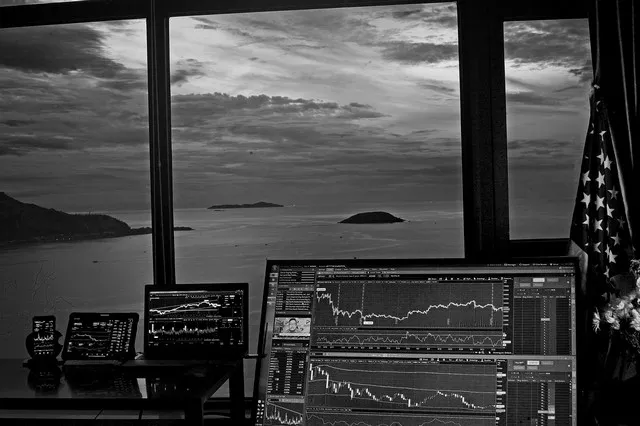Timing is crucial in the world of financial markets, and the grain futures market is no exception. Understanding the specific hours during which grain futures are open for trading is essential for market participants, traders, and investors. In this comprehensive guide, we will delve into the opening hours of grain futures markets, exploring the factors that influence these timings and the significance of being aware of market hours when engaging in trading activities.
Global Nature of Grain Futures Trading
The grain futures market operates on a global scale, involving various commodities such as corn, wheat, soybeans, and more. Given the international nature of agricultural commodities, the trading hours are influenced by different time zones across major financial centers. The primary markets for grain futures are located in the United States, particularly the Chicago Board of Trade (CBOT), which is part of the CME Group. However, the interconnectedness of global markets means that trading activities can have ripple effects across different regions and time zones.
Regular Trading Hours for Grain Futures
Grain futures typically follow a set schedule for regular trading hours, providing a structured framework for market participants. The regular trading session for grain futures in the United States usually opens at 8:30 a.m. Eastern Time (ET) and concludes at 1:15 p.m. ET. These hours are known as the “day session” and encompass the period when most market participants actively engage in buying and selling grain futures contracts. The regular trading hours allow for efficient price discovery and the execution of trades during the standard business day.
Pre-Market and After-Hours Trading
In addition to regular trading hours, some grain futures markets offer extended trading sessions known as pre-market and after-hours trading. Pre-market trading occurs before the official opening of the regular session, providing an opportunity for traders to react to overnight developments and news. After-hours trading takes place after the regular session has closed, allowing for continued market activity beyond the standard business hours. While pre-market and after-hours trading can offer increased flexibility, it is essential to note that liquidity during these periods may be lower compared to regular trading hours.
See Also: Can you trade futures overnight?
Factors Influencing Trading Hours
The determination of trading hours for grain futures is influenced by a combination of factors, including market conventions, global participation, and technological advancements. Market organizers consider the needs of participants across different time zones to ensure fair access and liquidity. Technological innovations in electronic trading platforms have also contributed to extended trading hours, enabling participants to engage in transactions outside traditional market hours. Additionally, the integration of global markets has led to a continuous trading cycle that accommodates participants from various regions.
Influence of Economic Reports and Crop Data
The release of key economic reports and crop data can significantly impact trading activities and may prompt increased volatility during specific times. Market participants closely monitor reports such as the United States Department of Agriculture (USDA) crop reports, which provide crucial information about crop conditions, production estimates, and inventory levels. The scheduled release of these reports can lead to heightened market activity and price movements, making these times particularly important for traders. Being aware of the timing of such reports is essential for those engaging in grain futures trading.
Seasonal Variations and Planting/Harvest Seasons
Seasonal variations play a significant role in determining trading hours for grain futures. The agricultural calendar, particularly planting and harvest seasons, influences the demand and supply dynamics of grain commodities. During planting and harvest seasons, market participants may observe increased volatility and trading activities as farmers make planting decisions and harvest their crops. Traders often adjust their strategies based on these seasonal patterns, emphasizing the importance of understanding the agricultural calendar when participating in grain futures markets.
Global Events and Geopolitical Developments
Geopolitical developments and global events can also impact trading hours for grain futures. Unexpected events, such as geopolitical tensions, weather-related disasters, or trade policy shifts, can lead to sudden and significant market movements. The timing of such events may not adhere to regular trading hours, making it crucial for participants to stay informed and be prepared for potential market reactions. Global events can occur at any time, and traders need to remain vigilant and responsive to unfolding situations.
Importance of Real-Time Market Monitoring
Given the global and dynamic nature of the grain futures market, real-time market monitoring is essential for participants to stay informed about price movements and relevant developments. The availability of electronic trading platforms and market data feeds enables traders to access real-time information, execute trades, and manage risk efficiently. Whether during regular trading hours, pre-market, or after-hours sessions, having access to up-to-date market data is a valuable tool for making informed decisions and reacting to changing market conditions.
Risk Management Considerations
Understanding the trading hours of grain futures is integral to effective risk management. Liquidity, or the ease with which a trader can buy or sell a futures contract without significantly impacting its price, tends to vary throughout the trading day. During regular trading hours, liquidity is generally higher, reducing the risk of slippage and ensuring that traders can execute orders at desired prices. Outside regular hours, particularly in after-hours trading, liquidity may be lower, potentially leading to wider bid-ask spreads and increased price volatility. Traders should carefully consider these factors when planning their trading activities and managing risk exposure.
Conclusion
Navigating the timing of grain futures markets is a crucial aspect of successful trading and risk management. Understanding when the markets open, the availability of pre-market and after-hours sessions, and the factors influencing trading hours is essential for market participants. Whether reacting to economic reports, seasonal variations, or global events, staying informed in real-time is a key component of effective decision-making. As the grain futures market continues to evolve and integrate with global financial systems, participants should remain vigilant, adaptive, and well-informed to capitalize on opportunities and navigate the complexities of agricultural commodity trading.


